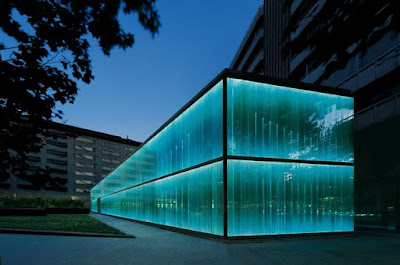Top 5 Lightning Methods Used in Interior Lighting
Proper lighting in a building is not only important for the illumination of the space instead it is essential to foster good mood, productivity, and liveliness. The lighting used in interior design is often overlooked by people. However, according to research, it is found that the lighting has a direct impact on the behavior of people. The need for lighting is catered by various sources. The lighting can be achieved by various types. These types are classified based on the lighting focus, direction, and fixture arrangement. Each type of lighting can be used in different areas and functions. In this article let us take a look at various types of lighting used in interior lighting design.
Types of Lighting
The lighting can be classified into five based on the focus of the lighting which are:
Direct
Semi-direct
General (formerly called diffused)
Semi-indirect
Indirect
Direct Lighting
Indirect lighting 90 to 100 percent of illumination from the light shines towards the surface of work. This is one of the most common types of lighting that is used to perform various tasks. The area that is lit will be dependent on the characteristics of the luminaire. For instance, the light that is shining downward may be concentrated in one place or spread eventually over a wider surface. This type of lighting is used for studying or working. Some direct lighting may cast a shadow or glare. This problem can be eliminated by fixing the light in the right position and angle.
Semi-Direct Lighting
In this type of lighting, around 60 to 90 percent of light from the fixture shines towards the working surface. The remainder of the light is reflected towards the ceiling and the upper portion of the walls. This type of lighting is perfect to soften the shadow and produce even lighting. Direct and semi-direct lighting has various features in common. As it is in direct lighting, the shadows and glares can be a huge problem when not fixed at the right angle with semi-direct lighting.
General Lighting
In this type of lighting, the light is distributed equally to the upper and lower areas of the room. In detail, 50 percent is distributed upwards while the remaining 50 percent is sent to the lower areas of the room. This type of lighting is also known as diffused lighting. The general lighting is used to illuminate the entire space. This can be pleasing to the eye for most people while it might be harsh for some people. Therefore, an indirect method of lighting that is less intense can be used.
Semi-Indirect Lighting
In semi-indirect lighting, around 60 percent of lighting is reflected towards the ceiling. To make use of this lighting, the ceiling and the room finish has to be highly reflective with smooth surfaces. This type of lighting offers a highly pleasing ambiance and also provides very good reading areas.
Indirect Lighting
In this type of lighting around 90 percent of lighting is reflected off the ceiling. The indirect lighting produces light that is distributed evenly and highly diffused. The ceiling is the main source of light with indirect lighting and therefore the lighting ceiling should be even and smooth. Only if the ceiling is designed well this type of lighting will be successful. Indirect lighting will reduce problems such as veiling reflections, shadows, and direct glare. The fixture should be placed far enough from the ceiling to prevent excessive brightness.
Bottom Line
The lighting is one of the most critical elements in interior lighting. Give a call to a professional of the best Interior lighting design in India and make your home the epitome of lighting design.



Comments
Post a Comment